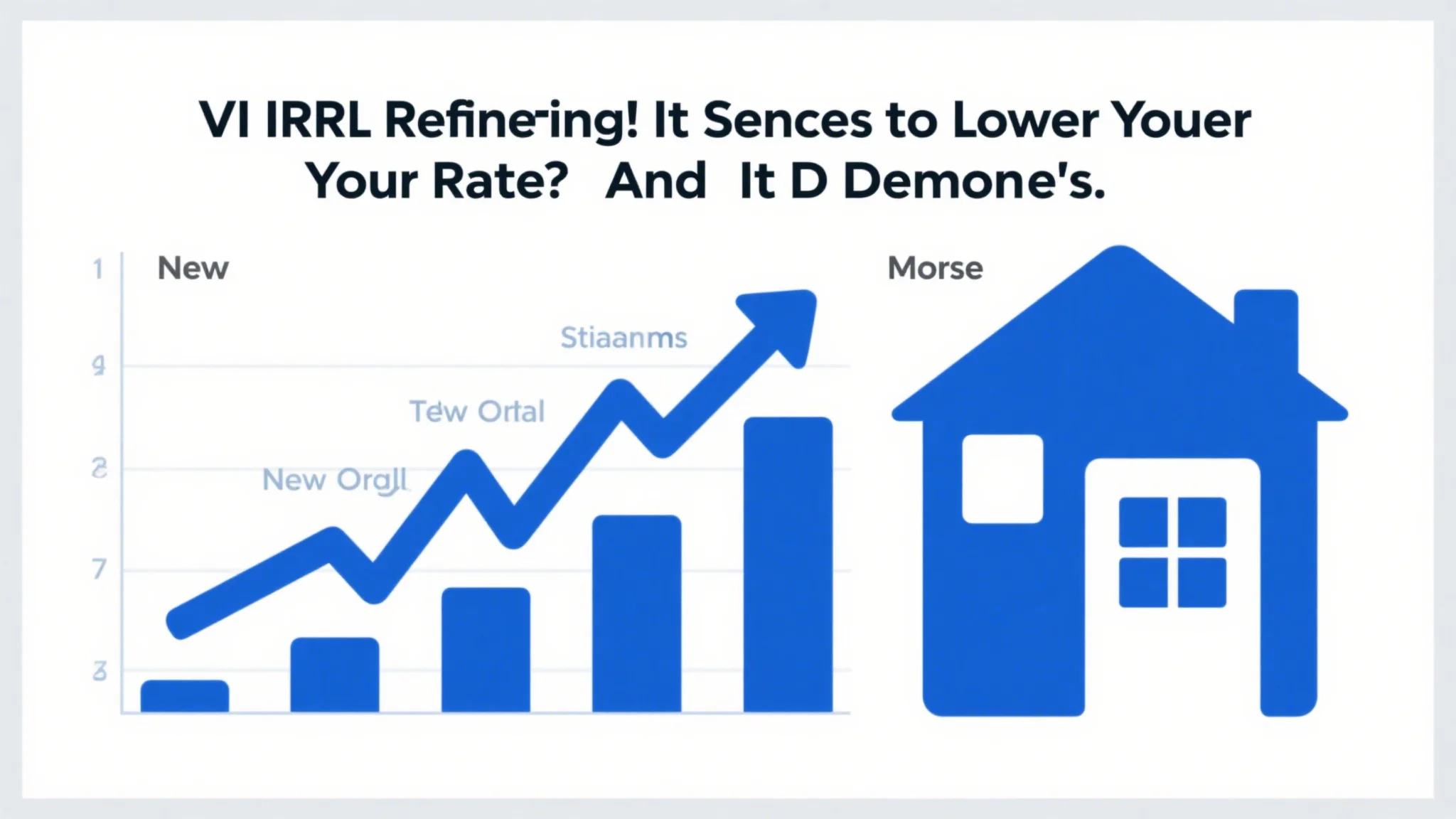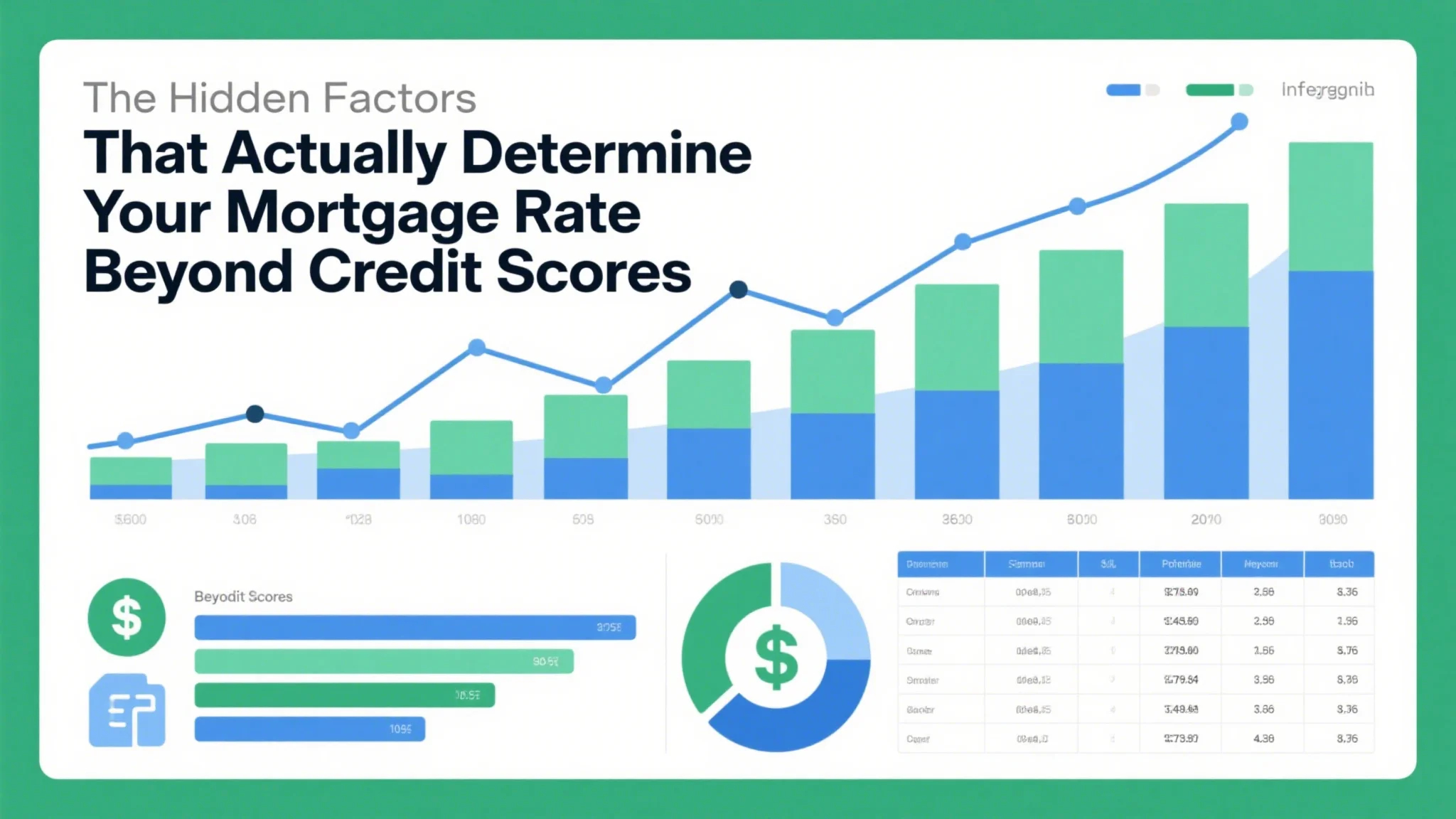When it comes to securing a mortgage, most borrowers focus on their credit scores, assuming that’s the primary determinant of their mortgage rate. While a good credit score certainly plays a role, it’s far from the only factor lenders consider. In fact, there are several other elements that can influence your mortgage rate, often in ways you might not expect.

One of the most significant factors beyond your credit score is the type of mortgage loan you choose. Different loan programs come with different terms, interest rates, and requirements. For example, government-backed loans like FHA or VA loans typically have more flexible qualifying criteria, but they may also come with slightly higher interest rates compared to conventional loans. On the other hand, jumbo loans, which are designed for higher loan amounts, often have stricter requirements and may offer less favorable rates.
Another hidden factor is the size of your down payment. A larger down payment reduces the lender’s risk by lowering the loan-to-value (LTV) ratio, which can result in a better mortgage rate. Conversely, a smaller down payment may require private mortgage insurance (PMI), which can increase your overall borrowing costs. Lenders also prefer borrowers who can make a down payment of at least 20% to avoid PMI, as this demonstrates greater financial stability and reduces the lender’s exposure.
Your debt-to-income (DTI) ratio is another critical factor that can influence your mortgage rate. This ratio compares your total monthly debt payments to your monthly income, and a lower DTI is generally preferred by lenders. A high DTI can signal that you’re overextended financially, which may lead to a higher mortgage rate or even a denied loan application. To improve your DTI, consider paying off existing debts or waiting to take on new ones before applying for a mortgage.
The housing market conditions in the area where you’re purchasing a home can also play a role in determining your mortgage rate. In competitive markets where homes sell quickly, lenders may offer lower rates to attract buyers. Conversely, in markets with slower turnover, lenders may be less inclined to offer favorable terms. Additionally, the appraised value of the property can impact your mortgage rate, as lenders want to ensure the property is a sound investment. If the appraised value is significantly lower than the purchase price, you may face a higher interest rate or be required to make a larger down payment.
Finally, the length of your loan term can also affect your mortgage rate. Fixed-rate mortgages with shorter terms, such as 15 years, often come with lower interest rates compared to longer-term loans like 30-year mortgages. While shorter-term loans may have higher monthly payments, they can save you thousands of dollars in interest over the life of the loan. Adjustable-rate mortgages (ARMs), which have a fixed rate for a set period before adjusting, can be a good option for borrowers who plan to sell their home within a few years, as they often start with lower rates.
In addition to the factors discussed in Part 1, there are several other hidden elements that can influence your mortgage rate. One of the most impactful is the location of the property you’re purchasing. Lenders consider the geographic location when assessing risk, as certain areas may have higher rates of foreclosure or property damage due to natural disasters. For example, homes in flood-prone areas may require additional insurance, which could increase your mortgage rate. Similarly, homes in urban areas with higher crime rates may be viewed as riskier by lenders, potentially leading to less favorable terms.
Another factor is the condition of the property itself. If the home needs significant repairs or renovations, the lender may require a professional inspection to determine its value and structural integrity. If the inspection reveals issues that could impact the property’s value or safety, the lender may adjust the mortgage rate upward or require a larger down payment. On the other hand, a well-maintained home with few repairs needed can help you secure a better rate.
The timing of your mortgage application can also play a role in the rate you receive. Mortgage rates fluctuate based on economic conditions, market demand, and interest rates set by the Federal Reserve. Applying during a period of low rates can help you lock in a favorable mortgage rate, while applying during a peak period may result in higher rates. Monitoring market trends and planning your application accordingly can give you a strategic advantage when securing your loan.
Your employment history and job stability are also important factors. Lenders prefer borrowers with steady employment and a history of consistent income, as this reduces the perceived risk. If you’ve recently switched jobs or have gaps in your employment history, it could impact your mortgage rate. Providing detailed documentation of your income and employment history can help build confidence with the lender and potentially secure a better rate.
Lastly, the lender you choose can significantly influence your mortgage rate. Different lenders have varying underwriting criteria, fee structures, and pricing models. Shopping around and comparing rates and terms with multiple lenders can help you find the best possible deal. Additionally, some lenders may offer discounts for certain scenarios, such as being a repeat customer, using a specific loan program, or meeting additional criteria like completing a homebuyer education course.
In conclusion, while your credit score is an important factor in determining your mortgage rate, it’s far from the only one. By understanding and addressing these hidden factors, you can take proactive steps to improve your chances of securing a favorable mortgage rate. Whether it’s choosing the right loan type, making a larger down payment, or improving your financial profile, taking these steps can help you achieve your goal of homeownership with the best possible terms.



